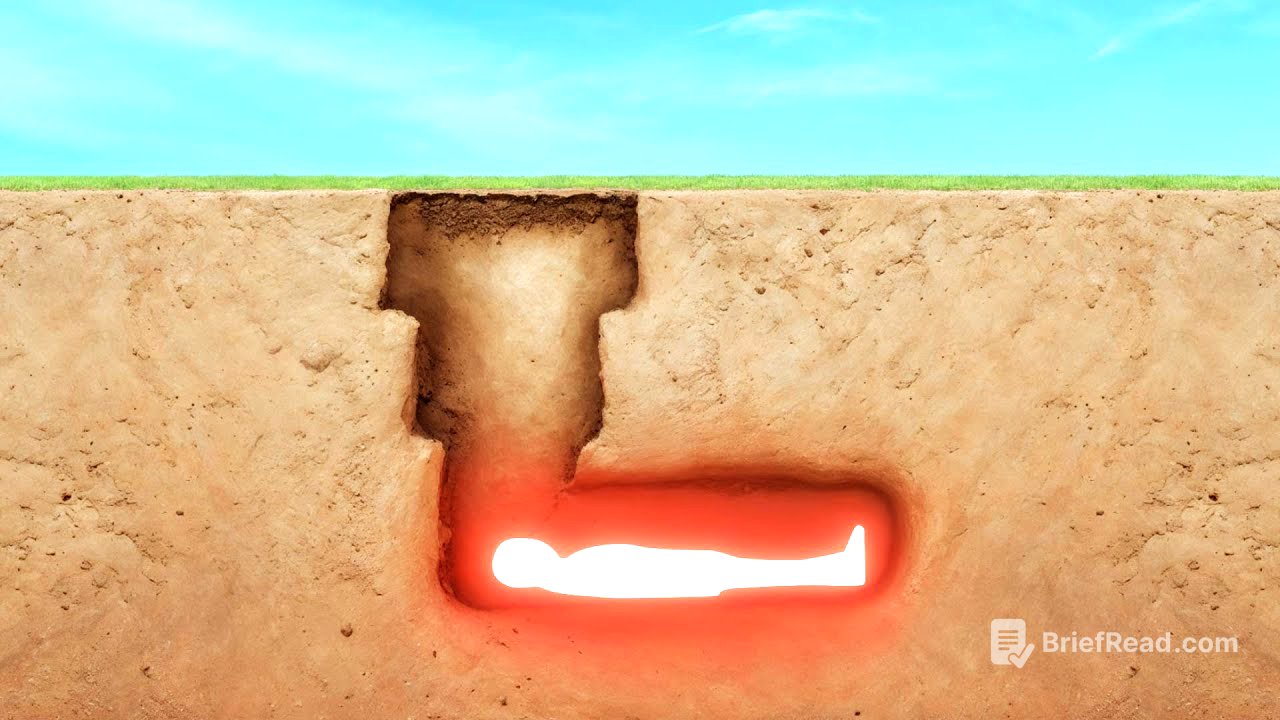TLDR;
This video tells the story of the hunt for Saddam Hussein after the 2003 invasion of Iraq. It covers the initial search, the capture of his sons, the shift in strategy to target his bodyguards, and ultimately, how Saddam was found hiding in a hole in Ad-Dawr. The video also talks about the aftermath of Saddam's capture and how the U.S. military used the image of his capture to erode his cult of personality.
- The initial invasion of Iraq and the search for weapons of mass destruction.
- The creation of a deck of playing cards to identify and capture high-ranking Iraqi officials.
- The shift in strategy to target Saddam's bodyguards, particularly the Al-Muslit family.
- The capture of Muhammad Ibrahim Omar Al-Muslit, which led to the discovery of Saddam's hiding place.
- The U.S. military's use of Saddam's capture to erode his cult of personality.
The Invasion and Initial Search [1:23]
The hunt for Saddam Hussein began with the invasion of Iraq in March 2003, with the U.S. claiming Saddam possessed weapons of mass destruction, a claim that later proved false. The invasion was swift, with U.S. and coalition forces capturing Baghdad within three weeks. However, Saddam remained at large. American soldiers toppled a statue of Saddam in Baghdad, replacing an American flag with an Iraqi one after realizing the negative image it portrayed. Locating Saddam and other high-ranking officials became a top priority for the U.S. military.
The Deck of Cards and the Bounty [3:25]
To track wanted Iraqi officials, the U.S. military created a deck of playing cards featuring the 52 most wanted individuals, with Saddam as the Ace of Spades. After months of unsuccessful raids, a $25 million bounty was placed on Saddam's head. This incentive led to a tip that Saddam's sons, Uday and Qusay, were hiding in a house in Mosul. U.S. troops raided the house, resulting in a fierce gunfight and missile strike that killed both brothers.
The Shift in Strategy [6:04]
Following the death of his sons, Saddam released an audio tape, confirming he was still alive. The U.S. paid the informant who provided information about Uday and Qusay $30 million, hoping to encourage others to come forward. However, months passed with no reliable leads, and many raids led to civilian casualties. The U.S. military then shifted its focus to capturing other officials from the deck of cards.
Targeting the Bodyguards [8:42]
Staff Sergeant Eric Maddox decided to focus on Saddam's bodyguards, theorizing that they were the ones protecting him. He began his work in Tikrit, Saddam's hometown, focusing on the Al-Muslit family, from which many of Saddam's elite bodyguards came. Maddox's interrogations led him to Muhammad Ibrahim Omar Al-Muslit, a trusted inner circle bodyguard who was believed to be leading the resistance against the U.S. occupation.
The Trail to Saddam [11:18]
Maddox interrogated Muhammad Ibrahim's nephew, who revealed the names of his business associates and his driver, Basim Latif. Further interrogations led to the discovery of Muhammad's son, Muslit, who mentioned that his father still fished at a pond in Samarra. This detail reminded Maddox of a housekeeper's mention that Saddam loved Masgouf, a popular fish in Iraq. U.S. forces raided the fish farm, and although they didn't find Muhammad, they found a fisherman who was related to a lieutenant in the resistance and had an uncle in Baghdad.
The Capture of Muhammad Ibrahim [13:10]
U.S. troops raided the house in Baghdad and captured Muhammad Ibrahim Omar Al-Muslit. Muhammad, after being offered protection for his family, revealed that Saddam was hiding in the village of Ad-Dawr. Based on Muhammad's information, U.S. troops searched two farmhouses but found nothing. Muhammad then pointed out a shack, and after some hesitation, indicated a piece of rope buried in the ground, leading to a hidden trap door where Saddam was found.
Aftermath and the Power of Narratives [15:59]
Saddam's capture did not end the Iraq War, and instability continued for years. The image of Saddam hiding became iconic and was used by the U.S. military to erode his cult of personality. The U.S. military invited journalists to tour his hiding place and released photos of his arrest, showing him frail and defeated. The video concludes by highlighting the power of narratives and how both the U.S. and Saddam understood the impact of images and propaganda.









